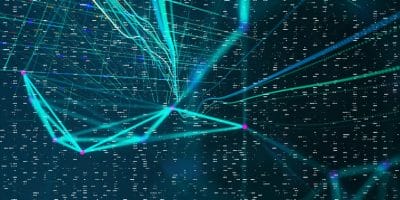FutureLab: Chemistry in the Digital Age | ZONTAL

As part of SciY, a Bruker division, ZONTAL contributes its expertise in digital continuity and data-centric architectures to enable the next generation of analytical laboratories. The digital transformation of analytical science is no longer theoretical, it’s happening in real labs today. At the recent FutureLab: Chemistry in the Digital Age event, hosted by CAMS and SciY, leaders from Merck, GSK, Johnson & Johnson, and ZONTAL explored how digital analytical methods (DAM) are reshaping the way we generate, trust, and automate data.
Why Digital Analytical Methods Matter
Analytical methods have long been documented in static PDFs, relying on human interpretation and manual transcription. Digital Analytical Methods (DAM) change this paradigm by making methods machine-readable, versioned, and executable. They define parameters, equipment, calculations, and logic that orchestration systems and robots can interpret directly. The result: fewer errors, faster transfers, and complete traceability.
As regulators introduce guidance such as ICH Q14 and USP <1220>, structured, lifecycle-based methods are becoming a compliance requirement. DAM not only support compliance but also create a foundation for automation and AI readiness.
Digital analytical methods are the connective tissue between science and automation.
How Standards Enable Automation
Automation and robotics thrive on interoperability. At FutureLab, the panel emphasized that open standards are key: SiLA 2 and OPC UA for device communication, ASM (Allotrope Simple Model) for data interoperability, and MCP (Model Context Protocol) for connecting method execution with AI. These standards ensure methods can move seamlessly between instruments, sites, and organizations.
A data-centric architecture ensures data—not applications—is the integration layer. Methods, results, and metadata flow through standardized schemas, enabling analytics, traceability, and AI integration. This shift transforms the lab from a collection of devices into an interconnected ecosystem.
The Human Side of Digital Change
Technology adoption succeeds only when people are ready. The FutureLab discussion highlighted that change management is essential: defining new roles, communicating the ‘why’ behind transformation, training scientific teams, and making them part of the transformation team. Digital methods don’t replace expertise, they amplify it. They don’t replace scientist, they augment them.
Organizations that embed change management early see faster adoption and measurable ROI. Scientists trust systems that mirror their workflows and provide transparency. In turn, leadership gains real-time visibility across analytical operations.
Collaboration Across the Ecosystem
CAMS provides a vital forum for collaboration between academia and industry, while SciY and ZONTAL bring the technology and data frameworks that make digital continuity real. Together with partners such as Bruker, Merck, GSK, and J&J, we’re aligning the scientific and technological foundations needed to modernize analytical workflows.
ZONTAL’s Perspective
At ZONTAL, our vision is to give every scientist and every robot the same language of method execution, a shared data foundation that makes science faster, safer, and smarter. Data-centric, standards-based architectures are the enabler for automation and AI that work reliably in regulated environments.
The work we’re doing today with SciY and our partners is building the foundation for an interoperable, intelligent, and autonomous future lab.
Explore More
- Learn more about Digital Method Transfer: Mastering Chromatography Method Transfer in Today’s Connected World | LCGC International.
- Read the Digital Analytical Methods Buyer’s Playbook.
- Follow SciY, Bruker, and ZONTAL for ongoing insights into digital transformation in science.
Subscribe to ZONTAL Insights for upcoming webinars, case studies, and white papers on the future of digital analytical science.

 >
> 

